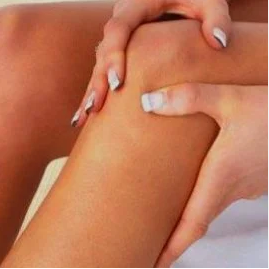
Knee pain is a uncle sanyi widespread phenomenon that signals an organization's problem – the appearance of that or the disease of the joints increased load on the feet.
It's hard to find that one person who has never experienced pain in the knee a certain life of the period. Discomfort, clicking, or pain intensity is variable, the knee joint occurs in disturbed adults or children, because of many reasons. The older the person is, the greater the probability of the different diseases, the first symptom, which is pain in the knee. Due to This fact that the age peculiarities of the test: slow down the metabolic processes, cartilage wear and tear, the accession of another problem in the musculoskeletal system, blood vessels, nerves.
Since a complicated anatomical structure and many structures experience high-load and often overload of the knee joint is very vulnerable. Any damage to a structure element, such as a bursa, and leads to the violation of motor function of knee and, consequently, pain syndrome. Ligaments, menisci is considered the most vulnerable, damaged a 80-85% of cases.
The anatomical structure of a knee

A knee includes a knee joint, the distal end of a femur and two podmienkami condyles, the tibia bones, muscles, nerves, blood vessels, ligaments, patella (knee cap), joint bags, menisci.
The knee joint is one of the most important joints of a test. The best choice femur. The articular surface of the lateral (outer) and the middle (inner) condyles patella articulate with a tibia. The meniscus, which is a connective tissue cartilages serve as shock absorbers, a common. Thank you, a rational layout, the body weight of the tibia-plateau increases a community's stability. Thin, two-headed, paliperidonesee other muscles sinhroniziruete capsule-ligamentous structures in providing motor activity of the knee joint.
The elements of a knee that connect several tapes. In a joint two ligament you back, and also. Podmyshalsky beder bones connected to bones, the tibia, the fibula the collateral ligament. Oblique popliteal ligament is located in the rear of the Bursa of the knee joint. The number of common cavities secret main joint capsules are not communicating with a community. The blood supply together with a knee due to the blood vessels network, and innervation – nerve them.
Causes of knee pain
There are many causes of pain in the knee joint, which is divided into several groups.
Traumatic lesions of the knee elements:
- Knee injury. As a result, a rupture of the blood vessels occurs in local bleeding in the soft tissues of a joint. The redness, swelling, nerve damage leads to, a pain, difficult movement.
- Complete or partial rupture of ligaments. Often diagnosed with a partial violation of an integrity of an internal lateral ligament resulting from excessive eversion of a tibia out.
External acl torn less than the internal. It is due to This that the strong deviation of the tibia inwards a exposed foot, for example. Cruciate ligament is necessarily accompanied by hemarthrosis.
Complete rupture, not a problem, a tape often associated with damage to a joint capsules, tearing and an internal meniscus. It is an injury leads to excessive mobility of the knee joint accompanied by severe pain, the intensity of which depends on the degree of tear.
- Hemarthrosis of the knee joint – a discharge of blood in a joint cavity. Sometimes traumatic or not traumatic in nature. Traumatic hemarthrosis occurs when a meniscus ruptures, complete or incomplete rupture of ligaments within the fracture, contusions to the knee region. A non-traumatic option for the symptoms of diseases characterized by increased fragility of the vessel wall were violations of coagulation or a system. Ezek include a hemophilia, scurvy, severe hemorrhagic diathesis. Assembled a joint cavity compresses the blood in the tissues, disrupting the blood circulation in them. A special pigment – hemosiderin – negative effect on the ligaments, üvegporc, joint bag that loss of a elasticity. The Result is a loss of synovial Bursa is a swelling of the fibres and an increased production of synovial fluid. The result of the repeated bleeding becomes degeneration and joint destruction.
- Knee miniscope – infringement of an integrity of a menisci of knee joints. The side form injury to the external meniscus, when the medial internal. This is one of the most common, but difficult to diagnose the injuries, the knee joint. The risk of the disease are not only athletes involved in intense exercise, but also ordinary people. The meniscus tear may develop suddenly, an unusual movement when you turn a test, a drop leg, a strong blow to a knee.
- Patella on luxatio on – abnormal displacement of the patella. Trauma diagnosed not more than 0,7% of the cases of the full disorder. Often, a sprain, an external, rarely internal, or very rarely a vertical torsion. In the case of incomplete dislocation of the patella is determined by the lateral (outer) condyles, while a full external lateral condyle.
- Or Closed of open fractures of a knee joint, the upper part of the foot bones, or the lower class beder bones. Such injuries are often combined with lesions of the soft tissues of the knee, severe bleeding, excessive movement of a knee region, a deformation.
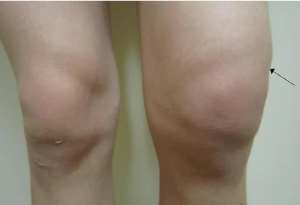
Inflammatory or degenerative-dystrophic diseases of the elements of the arthritic knee:
- Synovial inflammation of the knee joint. A similar mechanism for the development of pathology observed in osteoarthritis, ankylosing spondylitis-as the disease, rheumatoid arthritis, gout (the deposition of urate in the joints).
- Osteoarthritis (gonarthrosis) the damage to a knee joint an inflammatory nature, affecting the structure, which is severe degenerative changes.
- Bursitis Bursa inflammation of the joints leads to pain during flexion-extension movements of the knee.
- Periarthritis of the tendons, the knee – inflammation of a capsule, a goose leg, knee tendons, and the muscles, ligaments, and the surrounding community. The most pain occurs, and down the stairs especially with a heavy load, but mainly on the inner surface to the knee.
- A chondropathy patella , degenerative-necrotic changes in the articular cartilage (rear) surface of a patella. The degree a destruction of the different possible areas, the lungs to fully soften cracks wear.
- Chondromatous severe chronic disease process is caused by dysplastic island regeneration areas of the membrane in a common shell, a cartilage, a problem three. It is not Excluded, to separate the ossification of a body are cartilaginous.
- The Baker's cyst – a formation of a tight, elastic, rounded tumor masses in a popliteal fossa is located on the other side of a patella. A cyst, clearly in an unbent condition is shown in the knee. Cause discomfort, pain in the popliteal region. A substantial size of the compression of the blood vessels, nerves, that bothers me a innervation and the circulation.
- Goff's disease – a disease accompanying destruction and further degeneration of the adipose tissue located in the knee joint. A bite, swelling, and other injuries to the fat cells – adipocytes – end substitute dense fibrous tissue. In the end, a buffer function is a "fat pillow" is broken, a very fat, that is not able to perform the role of the shock absorber.
- Disease Osgood–Schlatter disease, characterized by necrosis lumpy part of the tibia. Diagnosed, in adolescents from 10 to 18 years participated in a sport. Below is a patella looks like a painful tumor in the absence of treatment still limit the movement of the feet, or total immobilization, as well as the malnutrition of the muscles.
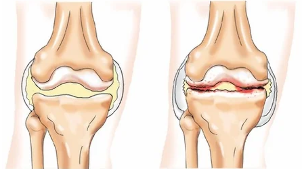
Diseases, which are a possible irradiation of pain in the knee region:
- The Coxarthrosis hip – chronic lesions of the hip joint accompanied by progressive degeneration and degenerative changes in it. Often, the pain extends down an outside surface of a femur to the knee or below.
- The neuropathy of the sciatic nerve is a non – inflammatory lesions of the nerve as a result of compression of the compression or spazmirovannah blood vessels. This nerve comes to the feet, starting in the lumbar region, and passes through the tail bone pool. A blockade, all in one place along disturbed feeling, or throbbing pain.
- Fibromyalgia – extra-articular lesions, the soft tissue non-full inflammatory buy nature symptoms, such as joint pain, muscle weakness, depression, etc.
Certain systemic diseases, which is the pain in the knee:
- Osteoporosis they disease, the skeletal system, chronic progressive changes, of course, the mineral composition and bone density. "Purge" the calcium in the bones leads to a fragility. A process accompanied by pain, or pain in the limbs.
- Tuberculosis of the bones. Tuberculous lesions of an area, a bone lead to permanent, severe pain.
- Osteomyelitis they are a disease, infectious, inflammatory nature, affecting the structural elements, the bones. The result of mind is a direct, such as tuberculosis, as well as specific, often coccal, osteomyelitis becomes, flushing of the skin, swelling, local pain in the bones, muscles, a fever temperature.
- Certain infectious diseases. When Reiter syndrome, in addition to the participation of the urogenital tract, eyes, affects the joints. One of the manifestations of Lyme disease, pain in the joints.
A type of pain in the knee
Depending on aetiology, one was nature, the pain intensity may vary.
- It hurts. Arthritis, arthritis.
- Spicy, strong. Fractures elements of a knee, a ligament rupture, acute bursitis, knee injury, aggravation of miniscope, deforming osteoarthritis.
- Throbbing. When running deforming arthrosis, meniscus injury.
- Practice. Osteomyelitis.
- Stupid. The bursitis, chronic Legg.
- Burning. When compression of a sciatic nerve, tuberculous a process bone.
- Shot. A pinch of the nerve trunk.
- Pain, when walking. When the Baker's cyst, bursitis, arthritis, gonarthrosis, periarthritis.
- The pain alone. Gout, arthritis.
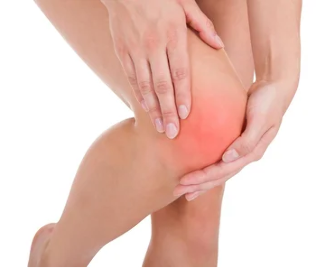
Diagnosis of diseases causing pain in the knee
Physics would test:
- medical history, complaints;
- visual examination is the palpation of a knee.
Laboratory tests:
- biochemical or clinical blood test;
- serological examination of the blood;
- immunological analysis of the blood;
- rheumatologic samples;
- bacteriological analysis of synovial fluid.
Invasive instrumental methods:
- arthroscopy;
- puncture a joint capsule;
- needle biopsy a bone.
Non-invasive diagnostics:
- x-ray of a knee joint;
- densitometry;
- ultrasound examination is a common;
- Or A MRI SCAN.
Treatment knee pain
The pain If one or both of the knees of a non-traumatic nature of the event, the first to a therapist, who on the basis of the patient's complaints and the results of objective examination are sent to a specialist – orthopedist, a rheumatologist, neurologist, or phlebologist. Every knee injury, contact a surgeon or traumatologist-orthopedist.
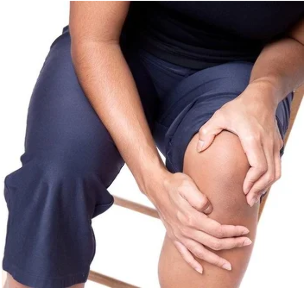
The treatment in all other cases, depends on the cause of the pain, i.e. an injury or disease. Each disease has its own treatment. A patient But first you need to follow a few general rules:
- significantly reduce the length of time a walk to a foot a day;
- the athletes temporarily (until recovery), to leave the training, as well as the ordinary people a running or jumping;
- when the pain to completely abandon a movement, put a locked knee with elastic bandage;
- a brace to wear bandages or to secure the knee joint;
- when injury from the cold, a place, a trauma exposure.
Rheumatoid, psoriatic arthritis, systemic autoimmune diseases in serious need of a comprehensive treatment for several months. Basic therapy consists of immunosuppressive drugs, steroid anti-inflammatory, hormonal drugs, gold preparations, etc.
A treatment of a bursitis is used for pain reliever, anti-inflammatory medication. If there is evidence of infection, a course of antibiotics. Therapeutic puncture a bag are performed to remove the excess fluid in the synovial cavity and/or administration of corticosteroids. The chronic inflammation of the Bursa will help you get rid of the surgery – surgical bunion surgery.
When deforming osteoarthritis effective within the injection of corticosteroids, prolonged use of nonsteroidal inflammatory drugs and chondroprotectors. The pain locally appointed compress a Dimexidum, or bischofite, creams, gels, and anti-inflammatory effect. Help, massage, physiotherapy, therapeutic exercises. Severe lesions of the knee need surgery – arthroplasty of the hip.
The osteoporosis treatment to bisphosphonates calcitonin, calcium, vitamin D, etc.
Treatment of a meniscus tear are conservative, surgical. Conservative therapy consists of the use of analgesics, nsaids, hyaluronic acid, chondroprotectors. But first, prepare to move a joint.
Type of surgery:
- meniscectomy;
- partial (partial) meniscectomy;
- transplantation of the meniscus;
- arthroscopy;
- arthroscopic sewing a torn meniscus.
In all cases, the damage to the knee after one treatment with a very important period of rehabilitation, which is meant to be a physical therapist under the supervision of or a podiatrist. A doctor Is the optimal recovery is a common feature. The main method of post-operative rehabilitation, holding, massage, physiotherapy. Also a effective the lessons are special simulators, gradually developing knee joint.












































